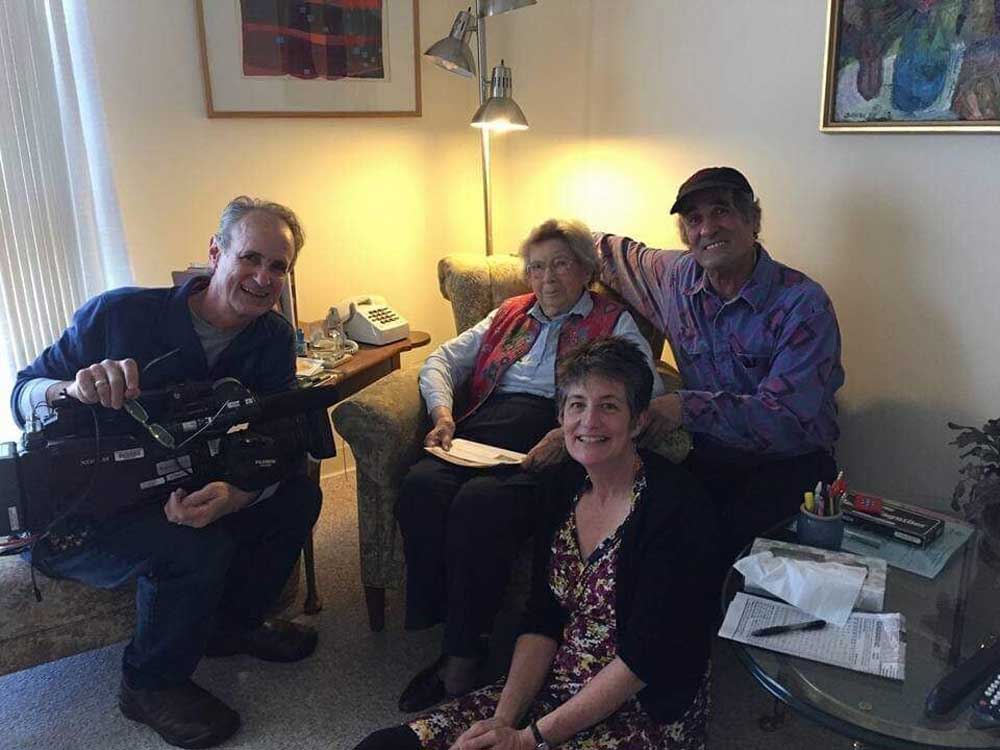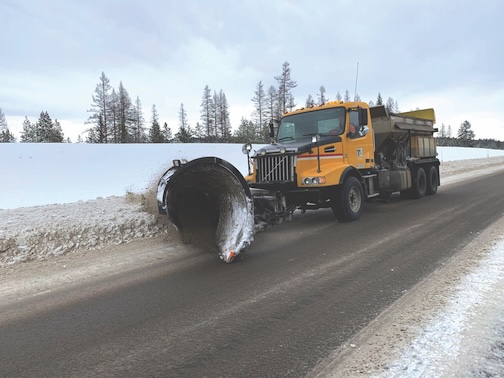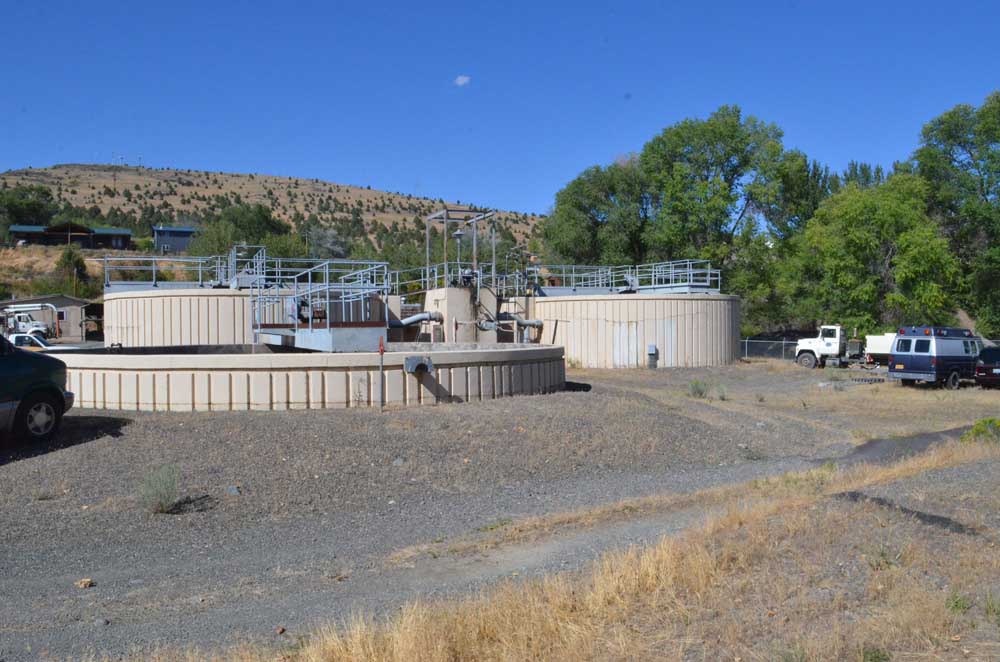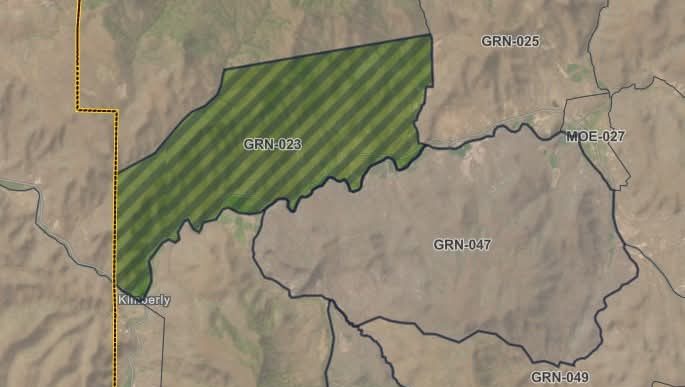Making it reel: Respected videographer Tom Shrider starts anew in Baker City
Published 1:00 pm Tuesday, August 8, 2023

- Tom Shrider, left, filming an OPB interview with children's author Beverly Cleary, one of many artists and authors featured over the years in his work with "Oregon Art Beat."
BAKER CITY — All stories are built from captured sights and sounds, moments and meanings. And for Tom Shrider, who retired from his nearly 40 year career at Oregon Public Broadcasting into Baker City as recently as June, the building of stories is his life’s work.
Trending
Shrider has spent these last several decades editing, shooting and writing video for OPB, which has brought him some palpable success. Shrider’s office shelf doesn’t display more than one, but if it did, his six gleaming Emmy awards would take up quite a block of space.
Videography and editing work is the piecewise creation of a film’s flow and composition from a pool of footage and sound. And while some retirees would twist and groan at the notion of picking up their trade’s tools once again, for Shrider it’s a thriving, lifelong passion, and he intends to carry on with personal video projects here in the Baker area.
“Editing is my truest love. I lose track of time when I start editing,” he said in an Aug. 1 interview. “I miss it, and I’m good at it, I think. And so I can do whatever films I want to do here.”
Trending
Shrider’s upbringing was a reflection of the ’50s “nuclear family” model, his father’s work as an agent with the FBI supporting him, his mother and two sisters. His sisters actually preceded him in college to learn about television, but didn’t follow through with it as Tom did. Shrider says his parents supported his education throughout, and lived to see him succeed in the industry.
“I studied television in Eugene at University of Oregon, majored in that, and my first job out of college was at LAMS, which is the Legislative Assembly Meetings System in Salem, a little in-house system where they record. And then I moved to Honolulu.
“When I started working it was in rooms worth $500,000 (of editing equipment),” says Shrider. For what is now a digital editing suite, Shrider’s experience began with the massive analog systems of broadcast television, roughly when VHS became mainstream over Betamax. Shrider says he doesn’t miss the old format, preferring the modern convenience of Adobe Premier Pro.
Shrider worked for NBC’s Honolulu station doing nightly newscast work, but as Hawaii’s population rose he opted to return to Portland, where he was quickly scooped up by OPB in 1980, and has spent much of his last 20 years of working life behind the scenes of the Oregon Art Beat series, up until 2018. It’s also when he met his wife of 11 years, Suzette, who operates her own little clay studio from one of their outbuildings.
“Almost every artist we ever did a story on over the years, hundreds of them, said some version of the following statement: I decide what I want to make, I get started and then the piece says ‘No, let’s go this way’. That’s true of editing too, that’s kind of the beauty of it, finding those connections.”
Though he’s lived most his life on the other side of the state, Shrider’s first Emmy award has an unexpectedly local origin. He was awarded for an episode filmed out of nearby Halfway, Oregon. That work was part of OPB’s ‘The Oregon Story’ series, which highlighted the lives of the locals one year after the town adopted the now defunct ‘Half.com’ name.
“We went to Halfway four times over different seasons, talked to people, got to know people there and produced an hour-long documentary about that, so we got our first Emmy,” he said.
“At OPB I wasn’t paid to be a producer, I was paid to edit, but at OPB if you reach up a bit they really are accommodating, so I do have some experience writing scripts and producing.” Shrider adds that his influences include Wes Anderson, Alfred Hitchock, and says he’s drawn a lot of inspiration from 1967’s The Graduate.
Among his exploits, one of his most important projects was filming the last live interview with country/rock music pioneer Johnny Cash, some of which later became part of 2014 documentary ‘The Winding Stream; The Carters, the Cashes and the Course of Country Music’.
“That’s still running on Netflix, Amazon, or somewhere, so that was my favorite. He died about ten days after we did the interview, and he was very sick,” said Shrider, “but Johnny wanted to be part of it, he wanted to be on record.”
“One I’m most proud of? There was a piece that I produced, shot and edited that won an Emmy, called ‘Monster Man’. There was this clay guy who only did little monster figures, and was wildly popular. In the 80s he was making bowls and pots, but had this one little monster figure he’d made he considered it a good luck charm. People kept stopping by the booth, not interested in plates and bowls and asked ‘How much is that?’ ”
Now that he’s local, Shrider has begun a new Youtube account as ‘Tombozen’ focusing on the Baker area, posting a video most recently of the chalk art gathering in downtown, and is currently working together segments on Miners Jubilee and footage of the recent Shriners game and parade.
He says that he wants to focus on the good character of the city that he can capture on film, the positives. Not only for art, but on occasion to fill community needs. It was friends and recognized creatives Brian and Karrine Vegter who’d introduced him to the area, and after a few years of visits they’d decided to commit to moving last spring.
Since relocating, Shrider’s been exercising his other talents, turning a rather plain yard into a lush, expansive garden, even to spite the damaging freeze earlier this season. He says that for his years of gardening west of the cascades, he’s never had success like this with the full sun available to him.
Still settling in, he’s considering offering classes out of Churchill, a chance to give those interested in film and editing some of his valuable insights and techniques.
Until then you may see him at many of Baker’s events camera in hand. For himself making art, and for the city making memories one frame at a time.









